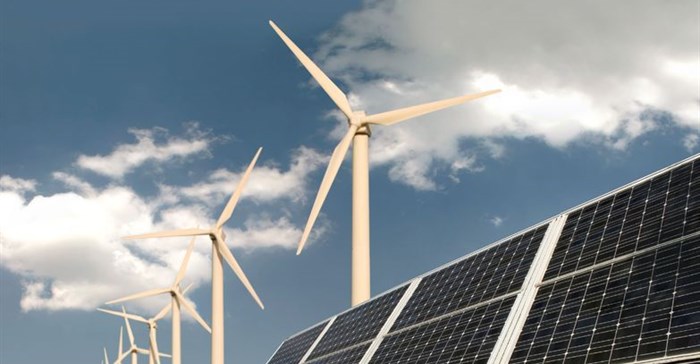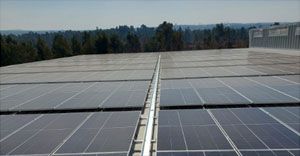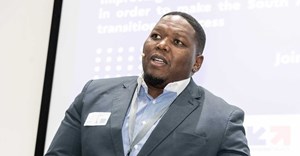Trending




 Sabre EMEA 2024 Awards: Razor PR, Retroviral top SA agenciesDanette Breitenbach
Sabre EMEA 2024 Awards: Razor PR, Retroviral top SA agenciesDanette Breitenbach
Elections 2024
Jobs
- Sales Executive Johannesburg
- Technical Energy Journalist - Freelance Johannesburg
Renewables competitive on price and performance
Technologies such as blockchain, artificial intelligence (AI), and 3-D printing continue to advance the deployment of renewables, prices will continue to fall, and accessibility will improve, according to Deloitte’s Global Renewable Energy Trends.
“In 2017 emerging markets accounted for 63% of global new investment in renewable energy, widening the investment gap with developed countries to a record high,” says Shamal Sivasanker, Deloitte Africa’s infrastructure and power industry leader.
“Africa and South America respectively have the greatest solar and wind resources, but these remain largely untapped, with Africa having one of the highest costs for solar PV due to investment costs. The trends in sub-Saharan Africa point to more viable renewable energy integration for the purposes of meeting the demands of rural electrification and growth in the commercial and industrial sectors.”
Longstanding obstacles to greater deployment of renewables have receded thanks to three key enablers:
- Reaching price and performance parity The unsubsidised cost of solar and wind power has become comparable or cheaper than traditional sources in much of the world. New storage options are now making renewables more dispatchable - once an advantage of conventional sources.
- Cost-effective and reliable grid integration Once seen as an obstacle, wind and solar power are now viewed as a solution to grid balancing. They have demonstrated an ability to strengthen grid resilience and reliability and provide essential grid services. Smart inverters and advanced controls have enabled wind and solar to provide grid reliability services related to frequency, voltage, and ramping as well or better than other generation sources. When combined with smarter inverters, wind and solar can ramp up much faster than conventional plants, help stabilise the grid even after the sun sets and the wind stops, and, for solar PV, show much higher response accuracy than any other source.
- The impact of technology Technology is accelerating the deployment of renewables: automation and advanced manufacturing are improving the production and operation of renewables by reducing the costs and time of implementing renewable energy systems; AI can fine tune weather forecasting, optimising the use of renewable resources; blockchain can enable energy attribute certificate (EAC) markets to help resolve trust and bureaucratic hurdles; and advanced materials are transforming the materials of solar panels and wind turbines.
Solar and wind have not run the full course of their enabling trends yet. As costs continue to fall and accessibility increases, the demand for renewables is growing rapidly, driven by the following stakeholders:
- Smart renewable cities Most of the world’s population now lives in growing cities, some of which have taken a proactive “smart” approach to managing their infrastructure with connected sensor technology and data analytics. The focus of more advanced smart cities is to enhance quality of life, competitiveness and sustainability. Solar and wind are at the intersection of these goals because they contribute to depollution, decarbonisation and resilience while enabling clean electric mobility, economic empowerment, and business growth.
- Community energy Building on the original trend toward “community solar”, the addition of storage and management systems give communities more flexibility when implementing renewables. On-grid communities can now be powered independently from the grid, and in off-grid areas, community-owned partnerships enable electrification and reinvestment of profits.
- Emerging markets The cumulative capacity of emerging markets to develop renewable energy is on the verge of surpassing that of the developed world, as emerging markets have helped bring down the cost of renewables and are innovating in ways that benefit the developed world.
- Corporate involvement Corporations are procuring renewables in new ways, with many large corporations pursuing power purchase agreements (PPAs) and smaller corporations turning to aggregation. Furthermore, currently two thirds of Fortune 100 companies have set renewable energy targets and are leading global corporate procurement, signaling an important commitment from the private sector.
With prices continuing to drop, developed countries and emerging markets alike have the ability to integrate renewables into their grid systems to ensure competitive advantage.










